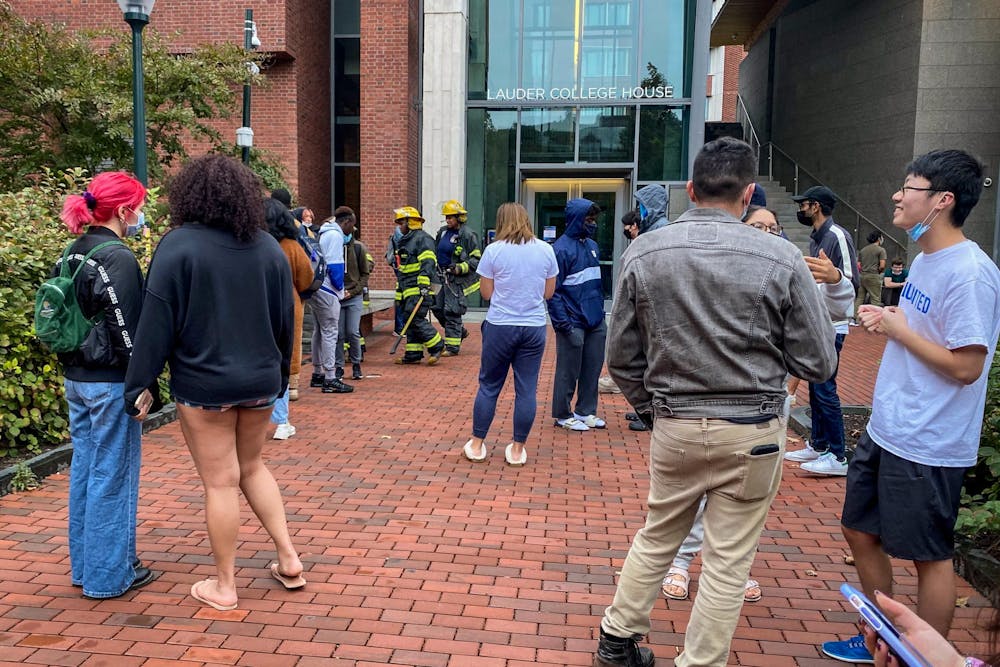Last week, sprinklers in Lauder College House went off, leading to a full building evacuation and the displacement of 12 students. Only 11 days prior, a similar sprinkler-induced evacuation displaced 23 students from Harnwell College House, forcing them to wait outside for hours in the middle of the night and damaging personal belongings. These leaks and evacuations come during Penn’s first year of requiring all sophomores to live in on-campus housing — a policy that continues to face criticism for the cost it imposes on students.
Given this requirement, Penn has a duty to provide safe and stable housing, not broken buildings. Incidents like the recent leaks and prior years’ collapsed ceilings, burst pipes, and mold, lead to severe disruptions in student learning and do not justify the steep price tag that comes with Penn’s on-campus housing.
Floods, leaks, and displacement severely disrupt students’ ability to learn and live safely. With laptops, notebooks, and other personal belongings damaged in leaks, studying for midterms or finals is affected. Prolonged disruptions at 3 a.m., like students at Harnwell experienced, interfere with sleep and affect students’ classwork the next day. These disruptions undermine Penn’s stated goals of providing community and academic support through its mandated on-campus housing. How exactly do failing buildings help students feel supported and thrive at Penn? How do they actually bring students together? While students might connect and bond during 3 a.m. evacuations, and make the most of tough situations, this community is in spite of not because of the campus housing environment.
Climate change — funded in part by Penn’s own endowment — ensures that we can expect more and more severe weather events in the years to come. With Penn’s dated residential heating and water systems and aging buildings, facilities snafus are only going to become more prevalent. In 2018, unprecedented rainfall led to the spread of harmful mold in the Quad, displacing students and making them sick. We’ve already seen unprecedented Philadelphia weather this year, and while Penn facilities emerged relatively unscathed, this is just the start.
These incidents underscore the concern of whether Penn’s housing price tag is worth it for the quality provided. Sophomore housing costs between $11,356 and $15,418. Even with reduced financial aid for students off campus, due to a lower estimated cost of attendance, many upperclassmen and previous years’ sophomores have been able to find cheaper alternatives elsewhere. Further, students in Greek life contend with out-of-house fees and the “Sophomore Experience” requires students to purchase a dining plan, which students and Penn alike agree is more costly than off-campus meals. Given the fact that sophomores are paying more for their housing and associated costs than they otherwise would, Penn has an even greater responsibility to ensure that this housing meets minimum standards of quality.
If Penn is committed to its mandatory housing policy, and the aims of support and community it espouses, it needs to step up and actually provide housing that meets the needs of students. These problems are not going away anytime soon, and without change, sophomore housing will continue to flop.
Editorials represent the majority view of members of The Daily Pennsylvanian, Inc. Editorial Board, which meets regularly to discuss issues relevant to Penn's campus. Participants in these meetings are not involved in the reporting of articles on related topics.
SEE MORE FROM THE DAILY PENNSYLVANIAN EDITORIAL BOARD:
SEE MORE FROM THE DAILY PENNSYLVANIAN EDITORIAL BOARD:









